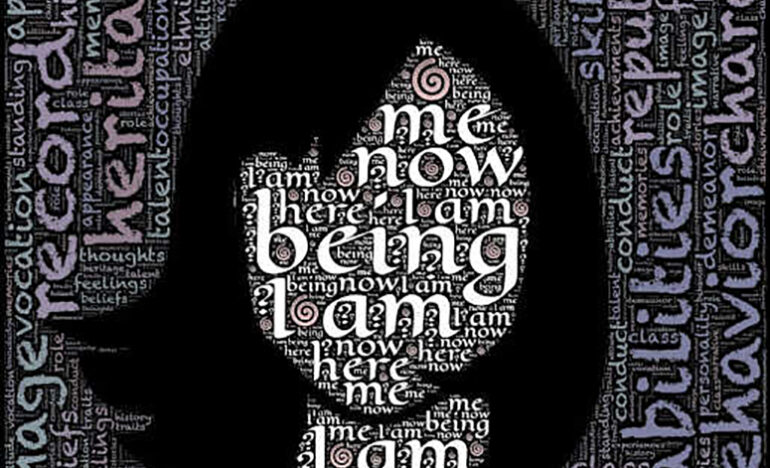Imprinted with the Image of God: Rediscovering Our True Self

By Kathy Keary
Part 1 of 3 Parts.
‘For whoever wishes to save his life will lose it,
but whoever loses his life for my sake
and that of the gospel will save it.’
This passage from the Gospel of Mark is repeated in the other three Gospels (Matthew 10:39, Luke 9:24, John 12:25), which underscores the weight of these words spoken by Jesus.
So what is this life that we are to lose in order to discover the fullness of life in Christ? Thomas Merton referred to it as “the false self.” The spiritual journey is all about dismantling the false self and becoming more and more the person God created us to be.
I like to think of the true self as the soul God kissed as he placed it in our body when we were in our mother’s womb. This divine life God implanted in us is as pure as driven snow. Nothing could be more innocent, loving, or good. Our soul is imprinted with the image of God waiting to be rediscovered, reclaimed, and embraced once again.
Never miss an article published to the Renewal Center website: Sign up to receive our newsletters
An experience that occurred when I received my First Holy Communion at the age of 7 comes to mind. In all my innocence, dressed in my white dress and veil with hands reverently folded and head bowed, an indescribable sensation permeated my entire being as I processed away from the altar rail with the host, the Body of Christ, in my mouth. I was filled with the sense of holiness, goodness, and love that God placed deep within me when he so lovingly brought me into the world.
This experience was a glimpse of my true self — of the divine life that lives within me. Recalling it fortifies my belief in the intimacy and power of the Indwelling Spirit that resides within each of us — the true self who is waiting to be revealed in its fullness. The experience brings to mind Jesus warning: “Amen, I say to you, unless you turn and become like children, you will not enter the kingdom of heaven” (Matthew 18:3). Jesus is summoning us to embrace and live out of our true self.
As Richard Rohr points out in his insightful book, Immortal Diamond: The Search for Our True Self, the second letter of John expresses: “There is a truth that lives within us that will be with us forever.” That truth is our true self. Rohr describes the true self like this:
“You (and every other created thing) begins with a divine DNA, an inner destiny as it were, an absolute core that knows the truth about you, a blueprint tucked away in the cells of your being, an imago Dei that begs to be allowed, to be fulfilled, and to show itself.”
Thomas Merton eloquently expressed the significance of being created in the image of God:
“To say I am made in the image of God is to say that love is the reason for my existence, for God is love. Love is my true identity. Selflessness is my true self. Love is my true character. Love is my name.”
Our true self is the embodiment of love.
Sue Monk Kidd in her inspiring book, When the Heart Waits, speaks of what Meister Eckhart referred to as the “true seed” within us. She explains:
“Eckhart identified the true seed as the living presence of God’s image implanted in the soul. ‘There is something in the soul which is only God,’ he wrote. I can’t think of anything that creates such a feeling of awe in me.”
In the Gospel of Matthew, Jesus instructs, “The kingdom of heaven is like a treasure buried in a field, which a person finds and hides again, and out of joy goes and sells all that he has and buys that field.” The treasure is our true self that was buried as we developed defense mechanisms to respond to the challenges presented by life. This treasure is buried in the rubble of our false self. The good news is that the soul that God kissed and placed in our bodies when we were in our mother’s womb has not been lost. It lies within us waiting to be rediscovered, reclaimed and embraced once again.
Stay tuned for our next article where we will delve into the development of the false self. Our attention will then turn to the dismantling of the false self as the true self reveals more and more of itself.
Note: New articles in this series are posted to the website every Monday. The full series can be found here: An Invitation to Something New: The Contemplative Life. On Thursday’s we’ll send an email to remind you of the articles.
[Kathy Keary, a Precious Blood Companion and spiritual director, holds a master’s degree in theological studies and is a graduate of the Atchison Benedictine’s Sophia Center’s Souljourners Program, an intense study of spirituality and spiritual direction. Kathy believes that the divine is present and active in all of life and encourages others to be awakened to the God in all including the divine within. She enjoys accompanying others on their journey to wholeness discovering the person they were created to be.]
Top image is by John Hain from Pixabay.
We’d Like to Hear From You!
We’d like to know what you think about our The Contemplative Life Series. Send us a comment using the form below. Do you have a suggestion? Is there something you want to learn more about? Send us a note.
Related
Lent Video Six – Holy Week Meditation: ‘Remember Me As You Come Into Your Kingdom’
In today’s guided meditation, Fr. Ron again leads you into an intimate conversation with Jesus while holding a cross or crucifix in your hands.

What’s the Problem?
By Fr. Garry Richmeier, C.PP.S.
You can’t fix a relationship or a behavior like a mechanic fixes a car or a surgeon “fixes” a patient. Behaviors and relationships don’t have parts that can be fixed or replaced when the break or malfunction.
Categories
Assembling God's Puzzle Coffee with Padre Cooking & Spirituality Encounters of the 4th Kind Family Matters Reflections on the Eucharsitic Prayers Spiritual Resources Taize Prayers The Contemplative Life Traveling with Pilgrims of Hope Uncategorized Videos Week of Prayer for Uhristian Unity When you need a little help
